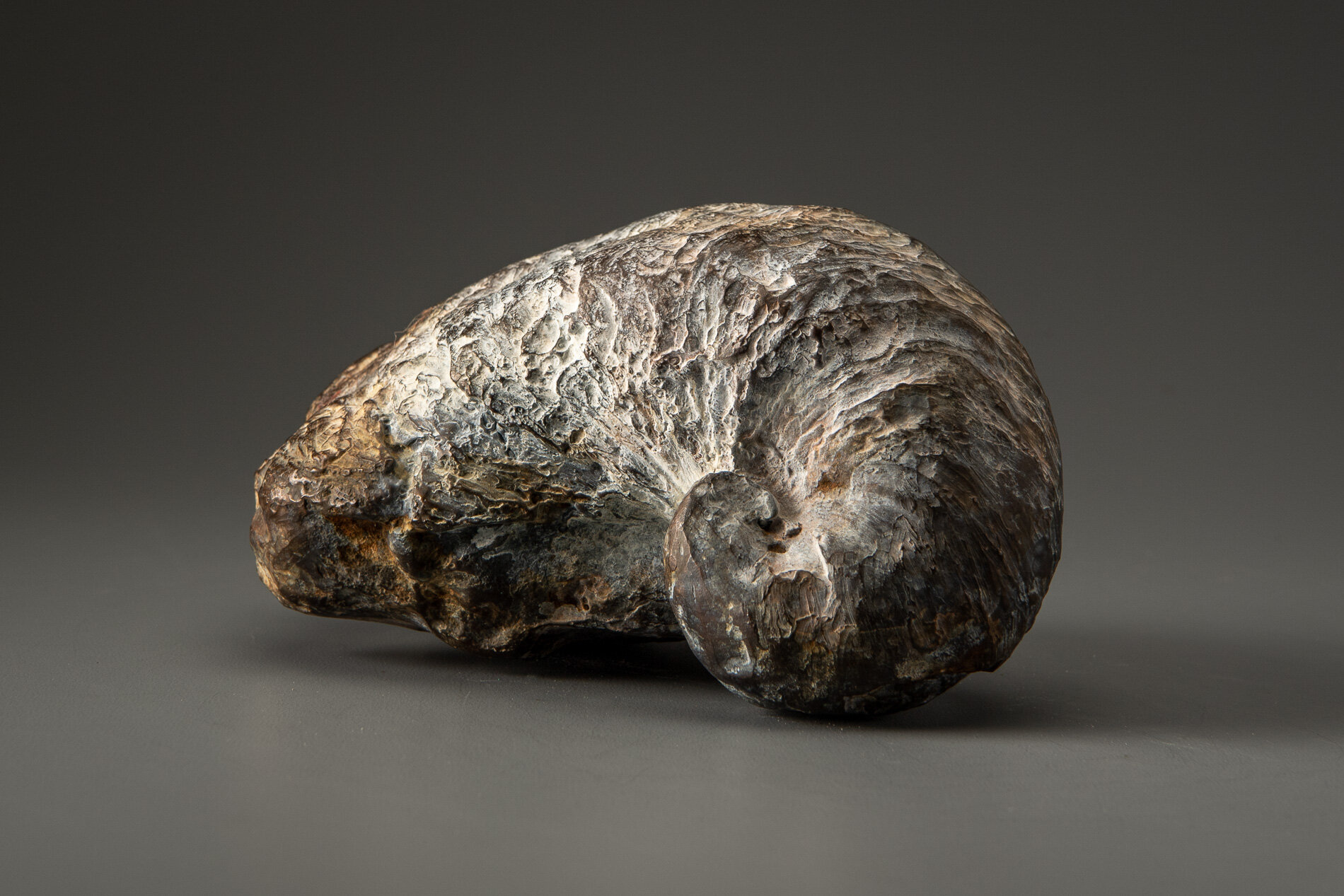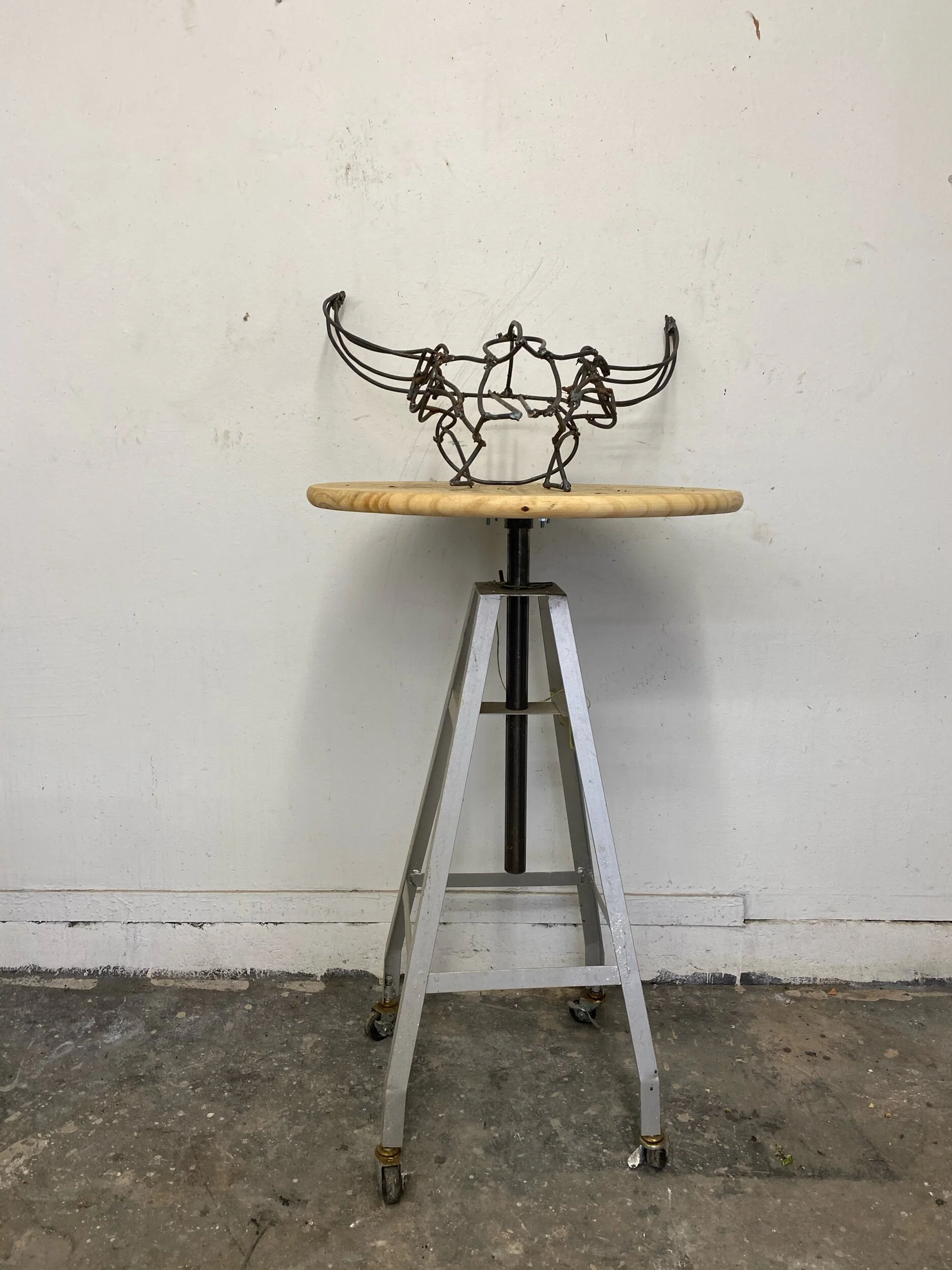Mute Testimony.
3” X 6” X 4”
bronze
phot by Nash Baker
A fossil is our planet’s recorded history, the memoir of a life in a place, time, ecology, and evidence of global warming. It is Endangered Knowledge.
Many processes in art and the natural world lead to fossilization, including casting or mold making. I crafted a mold of a fossil that one of my children found at my son Griffin’s 8th birthday party in El Paso, Texas. It was a fossil hunting party at Cerro de Cristo Rey. (The intersection of two countries and three states, a special place.) A prehistoric relic, now a family treasure, I thought it would be meaningful to make a mold and cast it in bronze for each of my two children, a reminder of their childhood. A mold-of-a-mold a fossil-of-a-fossil. I found the redundancy poetic.
My son is now 31 years old. I have probably walked by the fossil once a day since Griffin was eight years old and did not think twice about it. Casting, it has forced me to think about the form and its value as an object of art. Evidence of aquatic life resurrected from the middle of the Chihuahuan desert— This poetic symbol of desertification will find meaningful ways to wander across disciplines into future environmental works.
Hearing, “this desert was once an ocean.” did not use to phase me. Thinking about the mineral remnant of a sea creature surfacing in one of the driest terrains in the US gives me pause; it makes me consider how we can live our urban lives and preserve natural systems.
I cast three additional fossils to share with others who are interested in natural history; two are finished in a natural patina and one in a contemporary finish — polished stainless steel.
Traces of ancient life tell story of early diversity in marine ecosystems
Stainless Steel finish changes everything 🤔 more to come
























